
When it comes to driving leads and leases, competition is at an all-time high for apartment marketers.
Standing out among potential renters and differentiating yourself from the competition is getting more and more difficult.
Yet many multifamily marketers are still using the same, outdated apartment marketing tactics they’ve been using for years.
So how can you stand out to potential renters?
Consider the fact that 93% of today's marketers are standing out by adding content marketing to their marketing arsenal, and the results have been mind blowing.
For those same businesses, content marketing has helped produce 3 times more leads and their cost per lead has dropped 80%.
Even so, hardly anyone in the multifamily industry has made the decision to leverage the power of content marketing.
Enter a massive opportunity.
We’ve talked about it before - content is important.
But executing is more difficult than it looks. Especially when there are more than two million blog posts published each day.
And if that competition isn’t bad enough, the attention span of people you’re trying to reach is now less than a goldfish.
So how, specifically, can you hit the ground running and draw a direct line from revenue-generating activities back to your content efforts?
Here are five steps to make sure you stand out from the crowd, and hit your business objectives at the end of the day.
Twitter followers and your Klout score won’t pay the bills.
Leading indicators like these, often referred to as ‘vanity metrics’, sound nice on a press release but don’t always translate into revenue.
Instead, let’s start with your primary business objectives over the next year and reverse-engineer how content is going to support those efforts.
Generally, that means one of three areas in this context:
That’s pretty much it! No need to overcomplicate things at this point.
But it is important to begin prioritizing those three areas.
Depending on the size of your investment (which we’ll cover in the 5th step below), you might not be able to pursue all three effectively at the same time.
So which is most important, depending on where you’re currently starting from?
In other words, Loyalty often helps drive Awareness, which in turn will drive Sales. (Moving in the opposite direction, while tempting, it an uphill battle.)
Once you choose a path, you can begin to focus on a few key metrics under each:
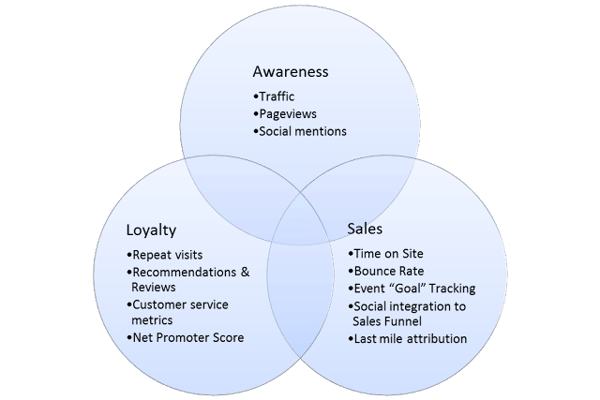
Prioritizing a major objective, and sticking to a few key metrics will help keep your investment and energy focused on delivering where it counts.
It will also help you stick to the goal when some metrics prove a little difficult to track, because the end goal will prove out.
In an ideal world, these basic marketing KPI’s will also help guide daily activities.
For example, the content used as a social update on Facebook should be vastly different depending on if you’re prioritizing awareness (where you need something interesting, entertaining, ‘unbranded’) versus sales (where it needs to be more related to your room product, amenities or location).
Following this will help you avoid pursuing activities that might be popular or trendy, but that don’t ultimately contribute to your bottom line.
We can’t start talking about how to create content, until we zero-in on who it’s for.
Content marketing can be tricky.
It needs to be entertaining and interesting enough to gain attention.
But it also needs to relate back to your business somehow to generate leases.
That means you’re constantly walking a fine line between the two, trying to figure out what resonates most.
Fortunately there are a few helpful tools out there to get started, including your very own Facebook page.
Their ‘Insights’ provide a wealth of knowledge not only about what content is (or is not) performing well, but also about the makeup of your page’s audience.
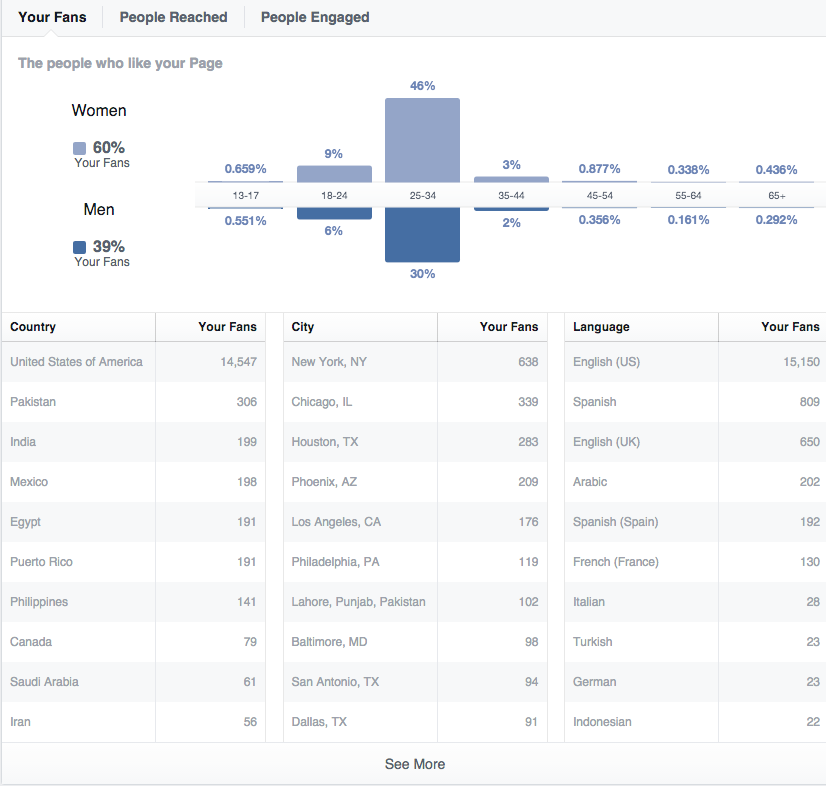
Another helpful tool includes Nielson’s ‘MyBestSegments’, which can provide detailed information along with their PRIZM technology.
A simple (and free) way to get started with this toolset is to use their ZIP Code Look-up, which will give you a breakdown of which types of people live in that area, along with some other helpful trends like population ages, income levels and more.
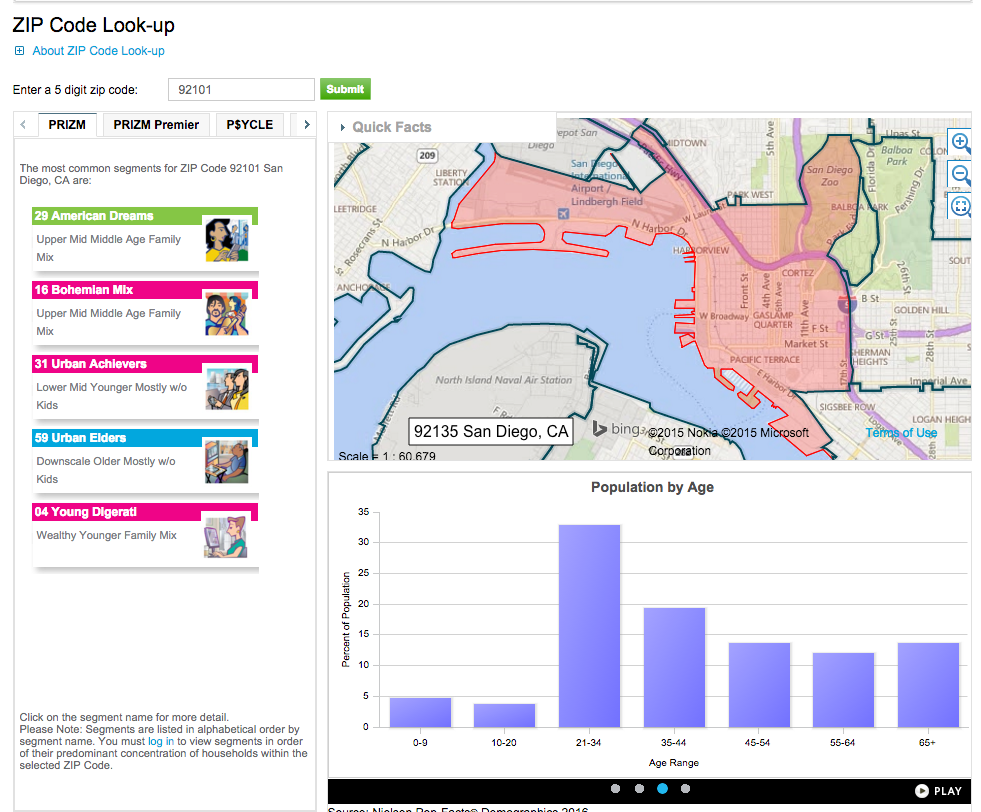
Using quantitative data like this can help supplement your own personal experience to create rich, detailed customer personas.
These are fictional representations of each major customer or prospective renter.
While they’re similar in concept to more traditional customer segments, using personas help you get a better feel for what these people are going through, fear, desire, or aspire to be.
Those motivations can then help you tailor your messaging and content materials in a more powerful (and profitable) way.
One helpful tool to get started assembling personas is MakeMyPersona, which will walk you through the process of creating your own before helping you export that information to a friendly format your team can use.
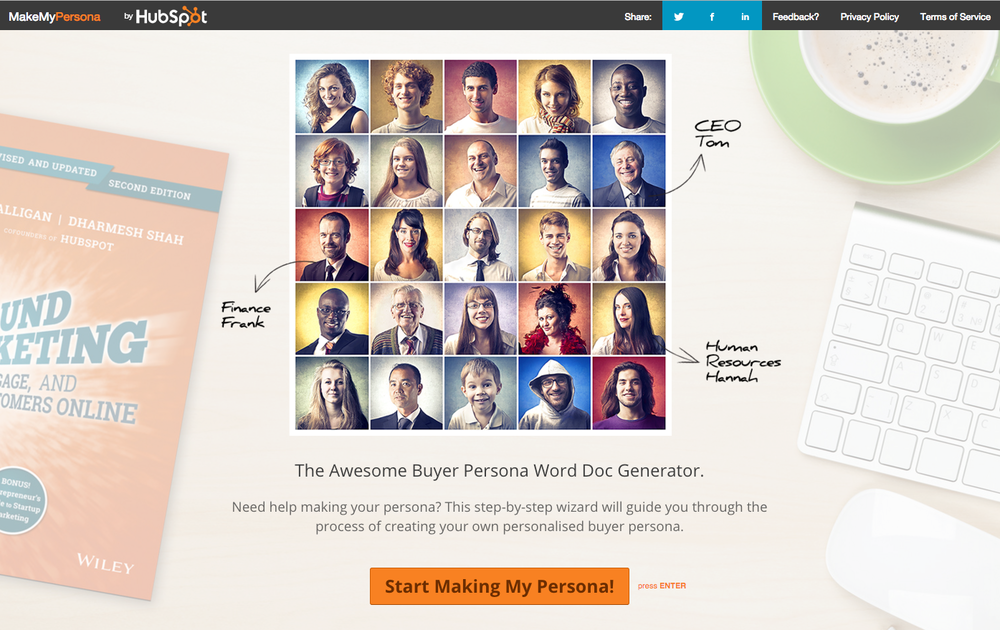
You can’t discuss audience research without mentioning qualitative, primary methods like surveys or interviews.
Chances are, you’re already doing them.
But it might be worth double checking the questions you’re asking in light of this new direction, seeing which you can remove entirely (like demographic data which you might be able to get from another tool listed here) or replace entirely (like adding more questions which elicit motivations instead of complex ‘rankings’ or ‘likert’ scales).
Now that you have personas which are living, breathing, representations of who you’re trying to target, it’s time to sit down and plan the approach.
Ultimately you’re looking for a few key themes to guide content topics and style, should come from whatever makes your properties special and unique.
Start by assessing the immediate competition to see what they’re emphasizing, and who they’re targeting.
Feel free to also include indirect competitors which might be a compelling alternative to your property.
The easiest way to do this quick analysis is through simply listing each out, and visiting their websites, blogs or social accounts to get a feeling for what messaging they’re emphasizing.
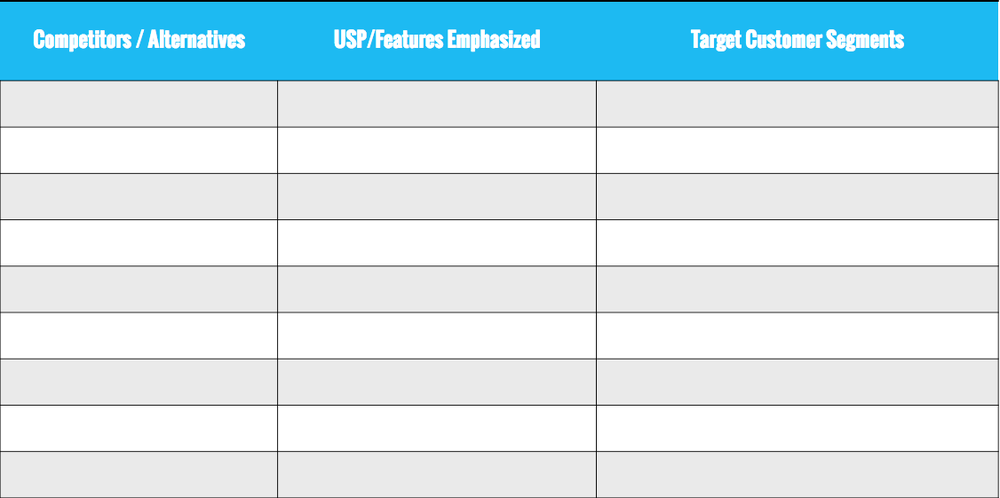
Once you have a basic lay of the land, it’s time to assess your own efforts so far.
The goal is to begin picking up on a few unique features, that you can articulate exactly how they provide a specific outcome or end result for each prospective renter persona.
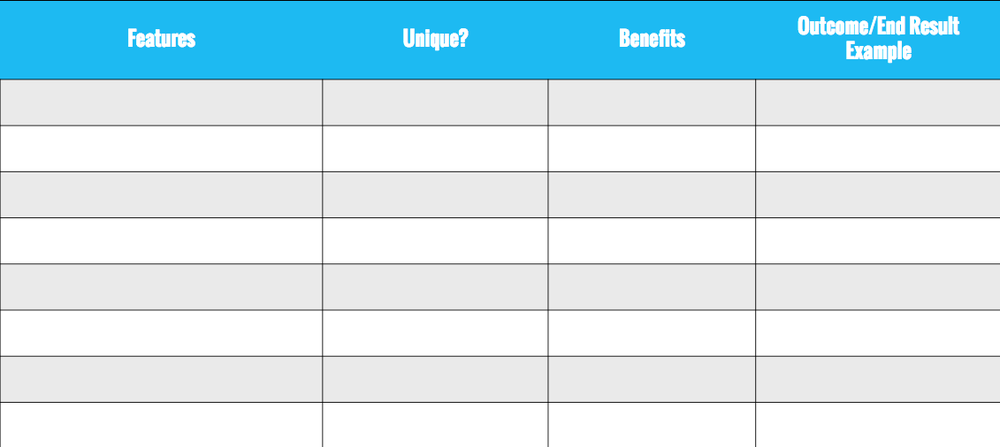
The result of this step should be a truly differentiated Unique Selling Proposition that others in the surrounding area can’t claim or match… besides low pricing!
Content creation and other forms of ‘inbound’ marketing become incredibly difficult if the only unique aspect of a property is low price.
Those forms of promotion are much better suited to other sales channels and ‘outbound’ tactics.
If content marketing is going to drive new leads to your property, it’s going to do so without overemphasizing price.
Now comes the hard part.
All the ideas and planning in the world can’t save poor execution. And as we’ll see in a minute, good execution doesn’t come cheap.
Let’s start with outlining those key themes stemming from your new content USP and personas.
Again, listing them somewhere simple is fine for now, as long as everyone responsible for implementation has collaborative access as well.
Then you can also break down all content marketing channels, like your website, blog, social accounts and email marketing, to decide on an ideal frequency, tone, and desired action for each.
Here are a few ideas to get you started:

Next up is the editorial calendar, where you’ll manage the content creation process for all channels.
Again, something as simple as a basic spreadsheet can help immensely. The key areas to record include:

A nice collaborative tool built specifically with this in mind is CoSchedule, which combines managing the editorial process through publishing and distributing that content.

Trello is a great option for visual people, which can mimic a giant whiteboard for all to see and immediately be on the same page.
With both of these tools, you can still assign those major elements, like the next deadline or who’s responsible.

Any other simple, online project management tool like Asana or Basecamp can help you manage an editorial calendar.
But the key is to emphasize (a) simplicity and (b) collaboration.
Again, good execution is extremely difficult.
The focus should be on that, not on mastering overly complex systems that bog down the process.
So far you’ve nailed down how content marketing is going to build your business, fleshed out detailed personas to target with your differentiated content, and put a plan in place to manage the ongoing output of high quality content.
Now it’s time to look at what you stand to gain from those efforts.
Your ROI is just that; a return on whatever you have invested to this point.
And contrary to popular opinion, that investment should be significant.
Just look at these reported costs in a recent Buzzsumo article, which shows that simple blog posts can take days to produce, while bigger pieces often take weeks and thousands of dollars.
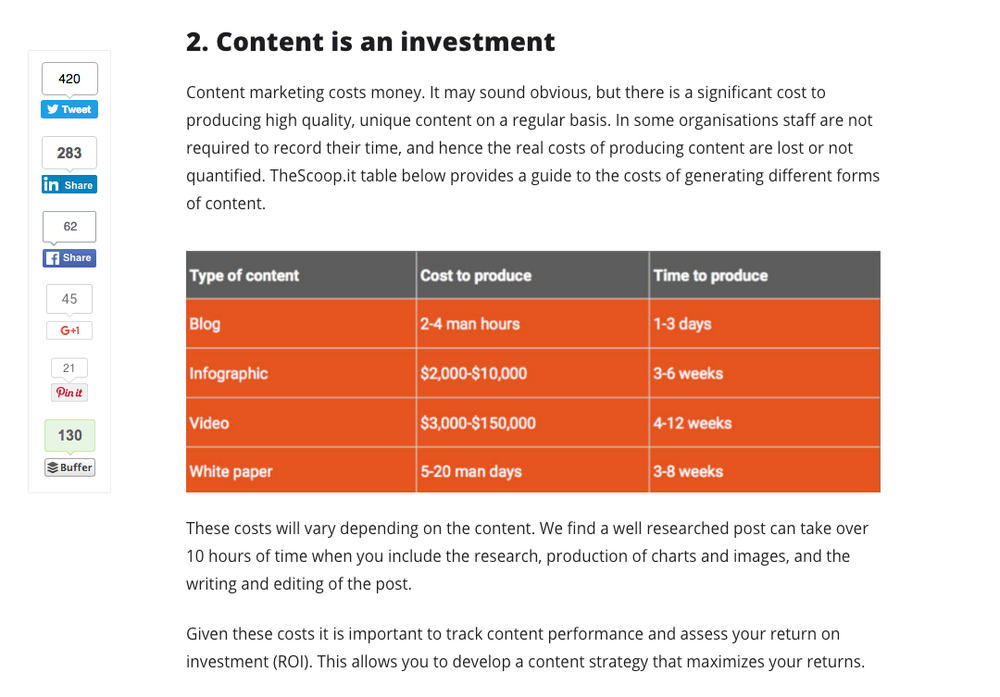
Another account that mirrors this experience comes from Max Chieruzzi, the CEO of Facebook Advertising software company AdEspresso.
Even as a seasoned marketer (and former journalist!), he acknowledges that it takes him a few days to put together a longer post of around 6,000 words.
Obviously as an executive, his time is precious these days.
As a result, they typically will work with freelance writers, which often charge $300-800+ for a blog post!
The point, is to be realistic about the costs and experience required to do this successfully.
That means hard costs to produce the content, time spent planning or managing, distribution and ad costs, as well as other tools or software.
As we’ve already explored, content does pay off handsomely.
But it will take some time to build up awareness and thought leadership in the short term.
These precursors need to occur before you’ll be able to start seeing real revenue come in.
Another way to assess ROI in the short term (before new leases begin to kick in) is by comparing what it would cost for the same reach and awareness through other means like advertising.
Studies by HubSpot have also shown that there’s a direct correlation between the number of content published and inbound leads generated.
One of the most recent studies shows that companies publishing 16+ posts a month generate 4.5x more leads (compared with those who only publish 0-4 posts).
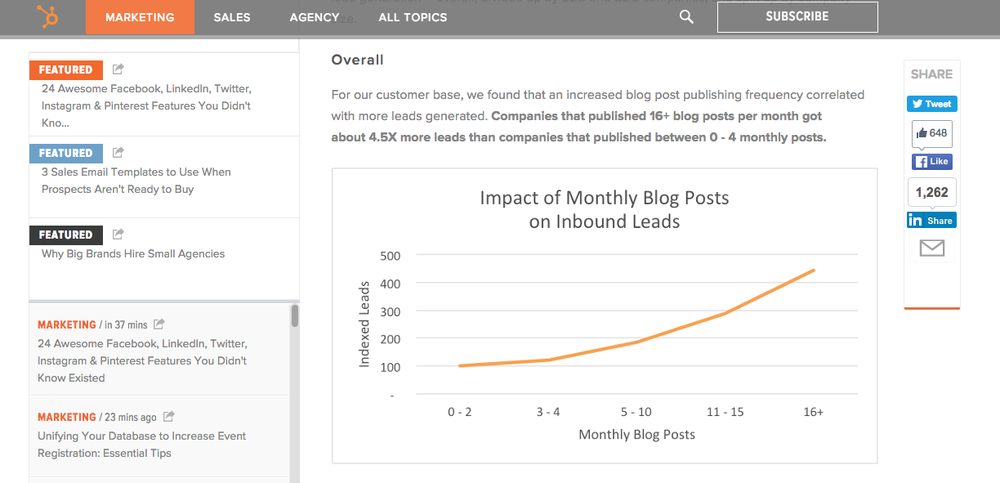
Your ROI now should be relatively straightforward once the content marketing efforts have gotten off the ground.
It’s the monetary value of those leases, divided by both hard and soft costs to produce, manage and distribute.
Content can generate new renters and leases.
But only if your strategy follows a logical progression, guided by your existing business goals and objectives.
Identifying those ahead of time will help make sure all activities that follow aren’t wasted or misused.
With so much competition, standing out is difficult.
The key is to create high-quality, differentiated content that resonates with your prospective renter’s personas.
Knowing what these people are interested in, or prefer, will help you determine everything from the ideal publishing frequency to the specific tone you should use.
Implementing this plan is tough, and the actual creation process is difficult.
So keep the workflow relatively straightforward, with an emphasis on collaboration to keep things moving.
Finally, when the ‘machine’ is up-and-running, you’ll be able to analyze the ROI of your efforts in a simple, transparent way.
It’s not easy. But the results speak for themselves.
These Stories on Content Marketing

San Diego, CA
600 B St.
San Diego, CA 92101

Austin, TX
600 Congress Ave.
Austin TX 78701

Washington, DC
1875 Connecticut Ave NW
Washington, DC 20009
Copyright © 2024 AM Digital, LLC Terms of Service Privacy Policy
Street Address
City, ST 00000
Call us: 1-800-COMPANY
(800-000-0000)